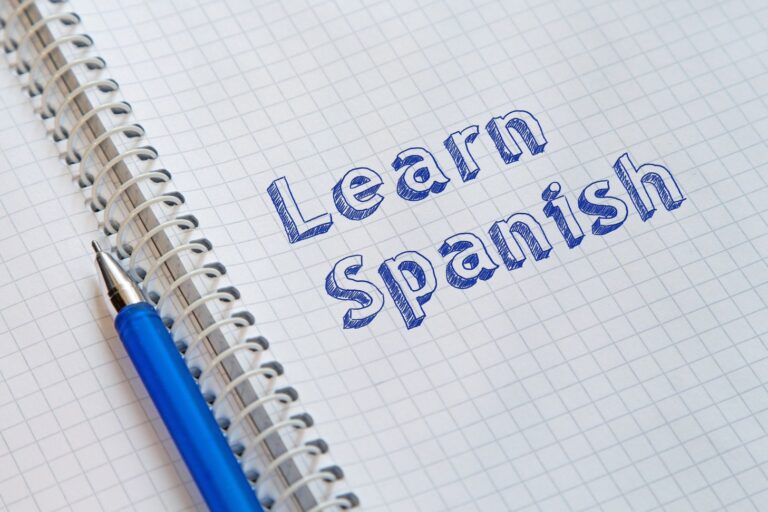
Enjoying a Colombian soccer game with some fellow gringos
Hello my friends, or as Spanish speakers would say, Hola mis amigos!
I am writing this article today because I have been told by many of my friends that they want to learn another language, but don’t know where to start. I have made a list of several suggestions based on what I did to learn Spanish in the past year that were very helpful, as well as things I tried that did not work so well, what I would call pitfalls to avoid.
But first, a little background on my story. I will never forget getting ready for my first trip to Colombia in May 2015. I will never forget my friend Rashid, who had just gotten back from Bogota, telling me “You better brush up on your Spanish”. I thought my three years of high school Spanish would be enough. Boy was I wrong.
Everything was fine when I got on the plane to Dallas to take my connecting flight to Mexico City, Mexico. Once I arrived in Mexico, I realized I was in a new world. One that didn’t speak English. “Donde esta su pasaporte?” said the Mexican guard, so fast I had no clue what he was saying. “Que?” I said, confused. “PASA-PORTE” he repeated. And that was only the beginning. Once I arrived to Colombia, I found many of the Colombians very curious about me and would come up to talk to me. I did my best to hold a conversation, but even the very basics were flat out impossible if they didn’t speak English at all. The highlights of this trip and my terrible Spanish were accidentally cutting a line of people for taxis (because I had no clue there was a line!), getting scammed on a date (also because I didn’t know the currency exchange value) and getting repeatedly ripped off by taxi drivers, servers, bartenders, street vendors, you name it, for being a “gringo” that didn’t speak Spanish.
To be honest, I felt like a complete idiot. Although I was only there a week, I came back to the United States utterly determined to learn Spanish and return within six months speaking fluently. And that leads to me to Step 1 To Learn Any Language Fluently In A year.
Step One: Download Duolingo
Once I returned to the US, I immediately downloaded Duolingo, a free application for your phone and computer where you can do daily lessons and learn the entire language tree of basically any language. I set the daily goal to the “Insane” setting of 50 XP a day and began my streak in earnest. THIS IS KEY. If you are going to do it, set your daily lessons at 50 XP at the very MINIMUM. Anything less is a waste of time. That is 20-30 minutes a day, max. After finishing the English to Spanish tree relatively quickly, I then completed the Spanish to English tree in order to further reinforce my newly learned vocabulary. At the time that seemed like a good idea, but I probably should have focused on reinforcing English to Spanish and moved to the next step.
Step Two: Complete a Pimsleur course and listen to music in that language
I started a program called Pimsleur soon after finishing Duolingo. It is a CD program I found in the library where you are basically hearing and repeating phrases in Spanish in different scenarios. It starts very basic, but gets harder and harder. I would highly recommend it for those people that are not yet conversational but have a basic knowledge of vocabulary and sentence structure, as it will bridge the gap between Duolingo and actually speaking to another person. Actually, in an ideal world, I would start Duolingo 50 XP a day and Spanish I Pimsleur at the same time. I think this would put you worlds ahead of where I was starting out.
I then went to the library and got a bunch of CD’s of Spanish music. At the time, I thought all Spanish music was terrible. All I had ever heard growing up was Banda and Tejano music, which I personally disliked. I began with Selena y Los Dinos, a tejano group from Corpus Christi, Texas, that had gained fame after Selena’s premature death in the 1990’s. After learning the words to the songs and singing along, I started to have a better understanding of the Spanish language, and the usage of it by Mexican-Americans.
I then began to listen to the local latin music radio station, 102.7. This exposed me to new genres of music including salsa, bachata, and reggaeton. I immediately fell in love with the reggaeton genre. As a guy that prefers upbeat, uptempo music with good beats this appealed to me immediately. I started listening to and learning the words to songs by Nicky Jam, Daddy Yankee, and J Balvin, three of the genre’s biggest stars. This taught me a lot of slang used by Puerto Ricans (where the genre originated) and South Americans (where it is very popular now).
This vastly improved my vocabulary and diction of the language. No longer was I speaking Spanish like a robot. Now, I was using the words and diction of native speakers, which brought me to step three.
Step Three: Translate, Translate, Translate
This is probably the step I hated the most of all. But to me, being able to read and translate quickly will allow your speaking skills and overall use of the language to improve rapidly as well.
During this stage, it is important to read the local Spanish newspaper and translate the articles to English so that you pick up more of the diction and words that are used. It is frustrating, and frankly sucks at times but it is well worth the payoff of an increased vocabulary, word usage, and sentence structure knowledge. As an added bonus you will also be able to read about news the latino community thinks is important, which will broaden your perspective to a different culture. Duolingo also allows you to translate on their website. I haven’t used that a ton, but a guy that regularly posts up a ton of weekly points does and he is fluent in 5 languages, so there you go.
Just do it. On to step 4, the most important step!
Step Four: Converse with Native Speakers
This was a HUGE sticking point for me during my six months back in the US because for whatever reason most of the hispanic people I tried to speak Spanish to in public would either answer me in English or say “I speak English” and act offended. This made it hard for me to practice early on, as at that time I didn’t have any Spanish speaking friends.
To solve this problem I found two apps for my phone, one called Tandem, and one called HelloTalk. Both apps allow you to text and talk with native speakers of the language you are learning that are learning your language. I immediately got into Tandem and started talking to tons of people from South and Central America. I found that most of them would type messages to me in English, but were too scared to actually speak to me in English on the phone. So I ended up getting tons of extra Spanish practice as a result.
You have to get over the embarrassment of speaking the language poorly and making mistakes to learn it and become fluent! Trust me, I spent literally months not speaking Spanish to people in the US because of this. The sooner you get over it, the quicker you learn.
Another part of this is going to language exchanges. When I was in Colombia I went to several that were very good. I would think being in the United States it is even more important because you are not surrounded by the language all the time. Which leads to step five.
Step Five: Immersion
Immersion is great because it leaves you with no choice but to learn. I have found that my Spanish ability goes up significantly every time I go to a Spanish speaking country for more than a week. I highly recommend immersion once you have completed Duolingo and Pimsleur and have practiced speaking to some natives. Once you are able to have a BASIC conversation you are ready for immersion. You have the base. Going to these countries you will pick up all of the local language and greetings and so on. If you are an outgoing person I would say you could be conversationally fluent in a month if you followed the other steps above. It is important to show up with an open mind, a memorized one paragraph story for who you are and why you are here —in Spanish (EVERYONE will ask you). From there you can practice with taxi drivers, ask locals for directions, and better yet strike up conversations with old men at the coffee shop or cute girls at the mall. The majority of people will be glad to talk to a foreigner that is trying to learn their language and culture.
If you are really ready to take it seriously, start hanging out with friends or staying with roommates that only speak that language. Better yet, get a girlfriend that only speaks Spanish. Having a Colombian girlfriend for one month improved my Spanish leaps and bounds. At one point, I remember being in a room with her entire family speaking Spanish and forgetting that we were speaking Spanish. At that point I knew I was conversationally fluent. It was pretty cool and by being around that all the time I picked up a TON of Spanish in a very short time.
Conclusion:
In short, learning a new language is not easy. But a person that is determined to do so can make it easier on themselves if they follow the steps above and NEVER GIVE UP!
At some point in your language learning journey:
You WILL get frustrated
You WILL look stupid
People WILL make fun of your accent or pronunciation
But guess what? WHO CARES. At the end of the day, when you are the one speaking multiple languages AND traveling the world AND making friends you never would have been able to otherwise AND doing international business, YOU have the last laugh.
NEVER GIVE UP and ALWAYS KEEP LEARNING! You will get there I promise!
Best of luck on your language learning quest. I am here for you, shoot me a message if you have any questions. Also, be sure to share this article with your friends!
Thanks for reading.. Hasta luego!


